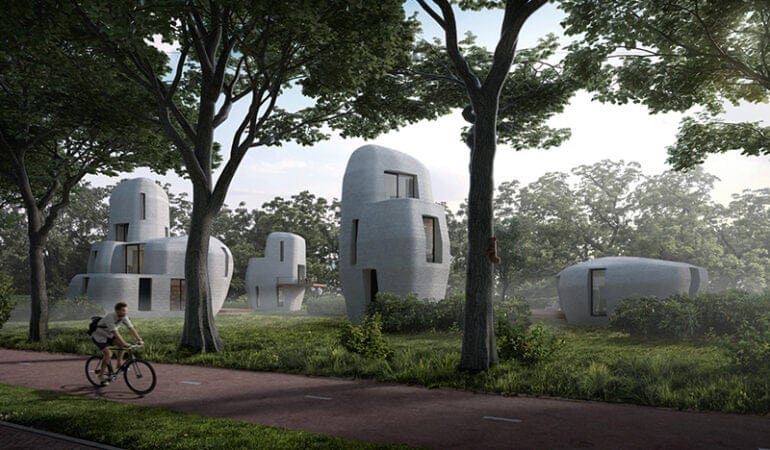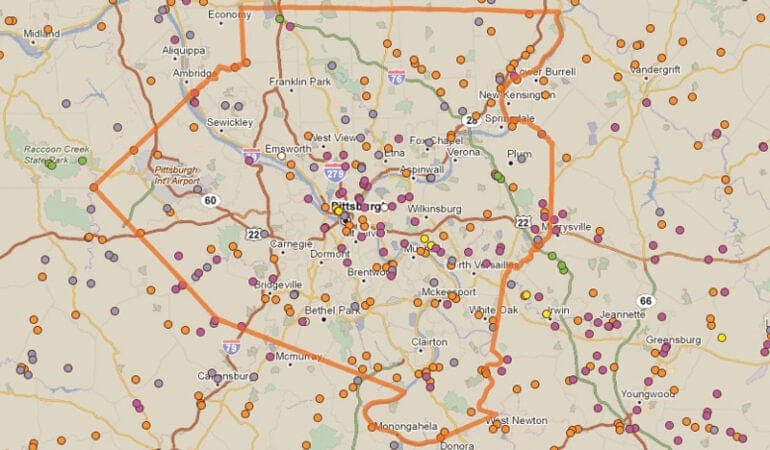In Colombia’s Caribbean coast city of Santa Marta this July, local citizens, community groups, public officials, and an unusual array of specialists will pick up tools and work together for two weeks to solve technology design challenges relevant to residents of coastal communities. In the process, they will hammer away at the ecological, social, and political issues facing poor people in the region, particularly those living in new, informal settlements.
The International Development Design Summit (IDDS) Colombia: 2018, New Coastal Territories, whose roughly 60 participants hail mostly from Latin America, will bring together MBAs, fishermen, architects, roboticists, anthropologists, economists, artists, biologists, chemists, and an assortment of engineers. A solid majority of the attendees are female.
High on the agenda are sanitation, housing, access to water, and food security. Participants will consider these needs within the context of territorial planning. The United Nations Human Settlements Programme (UN-Habitat) treats urban and territorial planning as a decision-making process geared toward achieving economic, social, cultural, and environmental goals through land policy. Planning is a means of reshaping cities and regions to spur local and regional growth “while addressing the needs of the most vulnerable, marginalized, or underserved groups.”
The logic behind the design event is to assemble diverse actors in an environment conducive to innovation on several levels. Given sufficient time, instruction, and support, participants can collaborate to devise tools and methods suited to local needs, and make progress toward hashing out complex, systemic problems. One of the main tenets of the design process is expecting negative results and learning from them.
The IDDS event’s grounding in the technology design process reflects its origins in a project launched at the Massachusetts Institute of Technology (MIT) in 2002. The event’s host is the Bogotá, Colombia–based Center of Innovation of Appropriate Technologies and Education (C-Innova), which was founded in 2015. C-Innova is an offshoot of the MIT D-Lab, a technology education and design hub and international community development program that’s active in Latin America, the Caribbean, Africa, and Asia.
D-Lab’s anti-poverty strategy aims to make the lives of poor people less precarious. It equips them to build durable settlements and create economic opportunity by developing technologies and products that can find ready markets within the community and potentially beyond. D-Lab has grown to include an interdisciplinary curriculum that emphasizes fieldwork, applied research in technology and community building, and bottom-up development methods centered on local creative capacity and sustainability.
D-Lab Founding Director Amy Smith is a senior lecturer in mechanical engineering at MIT. A former Peace Corps volunteer in Botswana, Smith was awarded a MacArthur Foundation “genius grant” in 2004. Her early collaborative design work—conducted with students interested in addressing the effects of poverty worldwide—includes methods for making low-pollution charcoal from agricultural waste, low-cost, easily maintained water filters, and bacteria test kits.
The lab works with a long list of international partners and heads up the International Development Innovation Network (IDIN), a consortium of universities, institutions, and innovation centers like C-Innova. IDIN was set up to support the International Development Design Summits, which Smith cofounded in 2007.
D-Lab-influenced innovations include a multistage water filtration system for treating contaminated spring water in Valle del Cauca, on Colombia’s mountainous Pacific Coast, and a composting method for creating fertile soil for use in small-scale food production in La Calera, on the outskirts of Bogotá.
“We’re a little different in the degree to which we engage the community groups—the end users—in the design process, the problem-solving process,” Smith explained. “Many initiatives consult the users but don’t engage them fully in creating the solutions, identifying the challenges in implementation, and making improvements.”
IDDS Building Peace, hosted by the National University of Colombia in January 2018, brought together participants in post-conflict resettlement talks, including members of the Revolutionary Armed forces of Colombia (FARC). The summit yielded a rainwater collection and purification system along with the constructive dialogue. “Anything that helps communities solve a problem—such as having drinking water at a very low cost—is also a step towards peace, because it will benefit all of us,” former rebel Efrén Morales told the National University of Colombia’s news service.
Bogotá
C-Innova works out of a repurposed neighborhood workshop, a short walk from the National University of Colombia, in Bogotá. Here, design-minded students and other community members can develop their tool skills, experiment, and make practical, low-cost devices from everyday materials. For the students, it means ready access to mentors, equipment, and materials in a less bureaucratic environment than on campus. To the local community, and throughout Colombia and the region, it’s part of a broader movement to use design principles and collaborative approaches to combat poverty and to democratize access to technology.
The center was part of a USAID-sponsored project to establish a global network of community-based technology hubs, according to cofounder Pedro Reynolds-Cuéllar. The idea was to bring together international and regional experts and professionals, local residents and organizations, and area entrepreneurs to address community needs through design-oriented activities promoting sustainable local and regional businesses. The center is based on a D-Lab template for community innovation centers: workspace and meeting space equipped with tools, training sessions, and a shop selling technologies.
C-Innova held a zero-waste summit in the city of Cali, where it worked with local waste pickers to develop a method of recycling plastic filament for use as 3-D printer resin—providing a new market for the material—and to foster what is now a 50-person business that recycles construction waste into cement. It has also worked with the displaced population in the southeastern outskirts of Bogotá to assist single mothers in ventures to make party decorations from recycled plastic and to design and build practical household items like cribs and lanterns.
Innovation Ecosystems
“The thing that is relevant to our work is this idea of creating local innovation ecosystems—whether they be urban or rural—that consist of both a network of community members and physical space,” Smith said.
After promoting design-based responses to poverty for nearly two decades, D-Lab has begun taking stock of the types of conditions that encourage innovation. In its hypothesis-forming stage of research, D-Lab is reviewing 300 local innovations—from peanut shellers and small-scale underwater turbines to water filters and sanitary napkins—by conducting interviews and preparing case studies in Africa, Southeast Asia, and Latin America.
In the first of a series of papers, D-Lab research scientist Elizabeth Hoffecker describes innovation ecosystems as “place-based communities of interacting actors engaged in producing innovation and supporting processes of innovation, along with the infrastructure and enabling environment which allows them to create, adopt, and spread solutions to local challenges.”
The lab seeks to identify the boundaries and other characteristics of innovation ecosystems, ways to measure and bolster a community’s ability to innovate, and the significance of local innovation in the context of the UN’s Sustainable Development Goals and similar initiatives.
D-Lab classifies local innovations by type: those that save time and/or labor, such as pedal-powered washing machines and wind-powered rice threshers, which increase income and free time for other productive uses; those that create new streams of income (usually novel inventions); those that fill important gaps in the provision of health, sanitation, and well-being; and those that provide an essential service, which enables other forms of economic or household activity. In general, these local innovations can increase well-being, income, access to education, mobility, and opportunity for local civic participation and decision making.
The overall approach can benefit the planning process, according to Peter Pollock, FAICP, manager of the Lincoln Institute’s Western Programs. “Developing and deploying planning tools shouldn’t be done in a vacuum,” he said. “Directly engaging end users to address their practical needs with appropriate technology will best help achieve these important social and economic goals.”
In conventional development terms, such local innovation can be seen to have limited impact and little uptake beyond the local community. Hoffecker notes that the vast majority of innovations were used by 500 people or fewer, and the median user group was 50—unsurprising, given the target communities.
But the MIT researchers found that innovation at the local level promotes the growth of infrastructure in the form of physical spaces and social networks.
This self-perpetuating dynamic is testament to D-Lab’s methodology: identify communities based on local needs, resources, and community interest; train community members in the design process and teach the skills to address their particular situation; help set up a makerspace; provide six months’ post-training mentoring; and, where feasible, provide seed capital.
“We start by teaching the design process with very tangible products and a very concrete challenge, and then move that to something like an intangible but still somewhat concrete solution,” Smith said. “And then [we] move to programs and systems, which are abstract and intangible, so that people can look at the design process as creative problem-solving steps for a variety of issues.”
Ted Smalley Bowen is a senior editor at the Lincoln Institute.
Photograph: C-Innova Team





